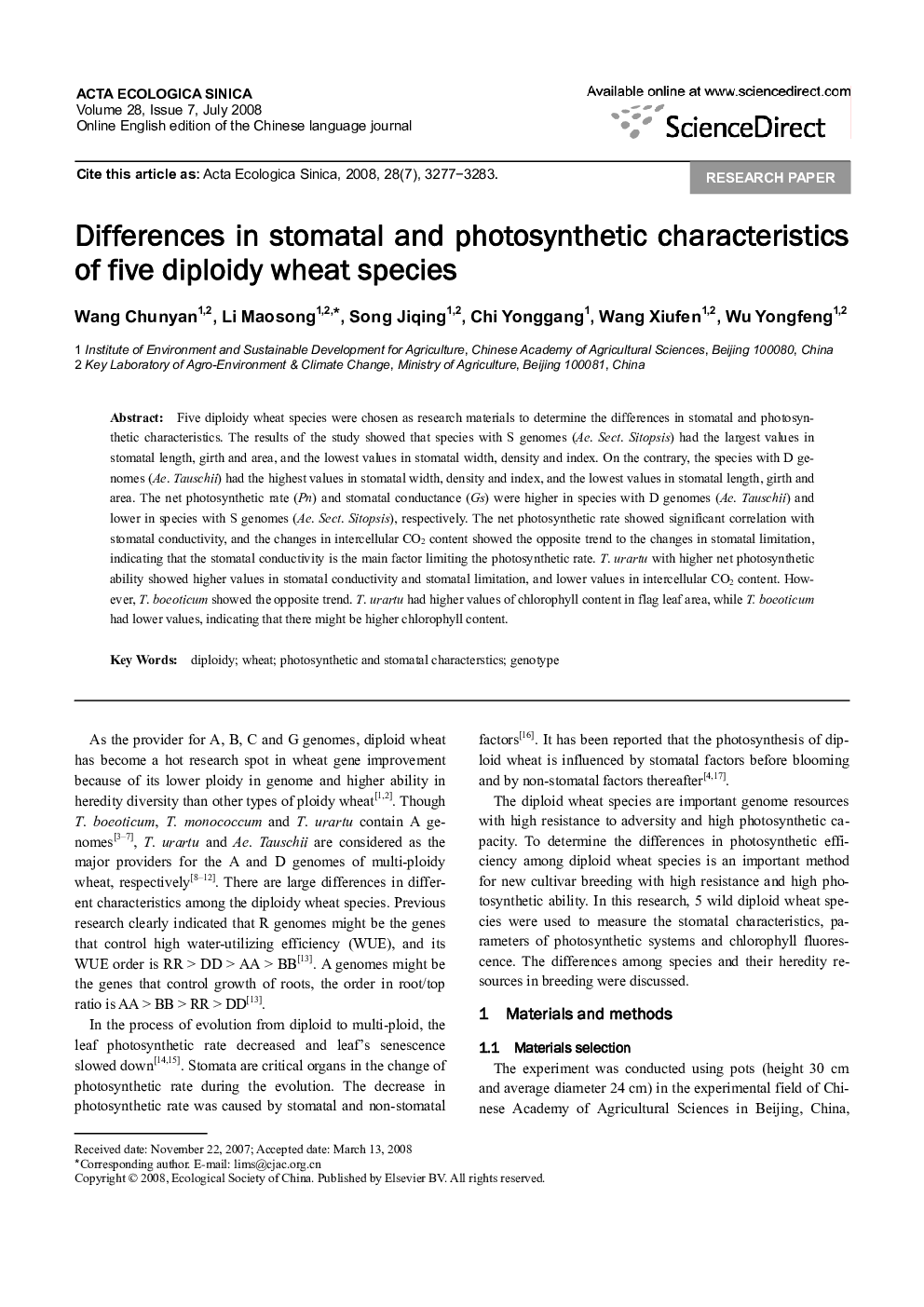| Article ID | Journal | Published Year | Pages | File Type |
|---|---|---|---|---|
| 4380330 | Acta Ecologica Sinica | 2008 | 7 Pages |
Five diploidy wheat species were chosen as research materials to determine the differences in stomatal and photosynthetic characteristics. The results of the study showed that species with S genomes (Ae. Sect. Sitopsis) had the largest values in stomatal length, girth and area, and the lowest values in stomatal width, density and index. On the contrary, the species with D genomes (Ae. Tauschii) had the highest values in stomatal width, density and index, and the lowest values in stomatal length, girth and area. The net photosynthetic rate (Pn) and stomatal conductance (Gs) were higher in species with D genomes (Ae. Tauschii) and lower in species with S genomes (Ae. Sect. Sitopsis), respectively. The net photosynthetic rate showed significant correlation with stomatal conductivity, and the changes in intercellular CO2 content showed the opposite trend to the changes in stomatal limitation, indicating that the stomatal conductivity is the main factor limiting the photosynthetic rate. T. urartu with higher net photosynthetic ability showed higher values in stomatal conductivity and stomatal limitation, and lower values in intercellular CO2 content. However, T. boeoticum showed the opposite trend. T. urartu had higher values of chlorophyll content in flag leaf area, while T. boeoticum had lower values, indicating that there might be higher chlorophyll content.
